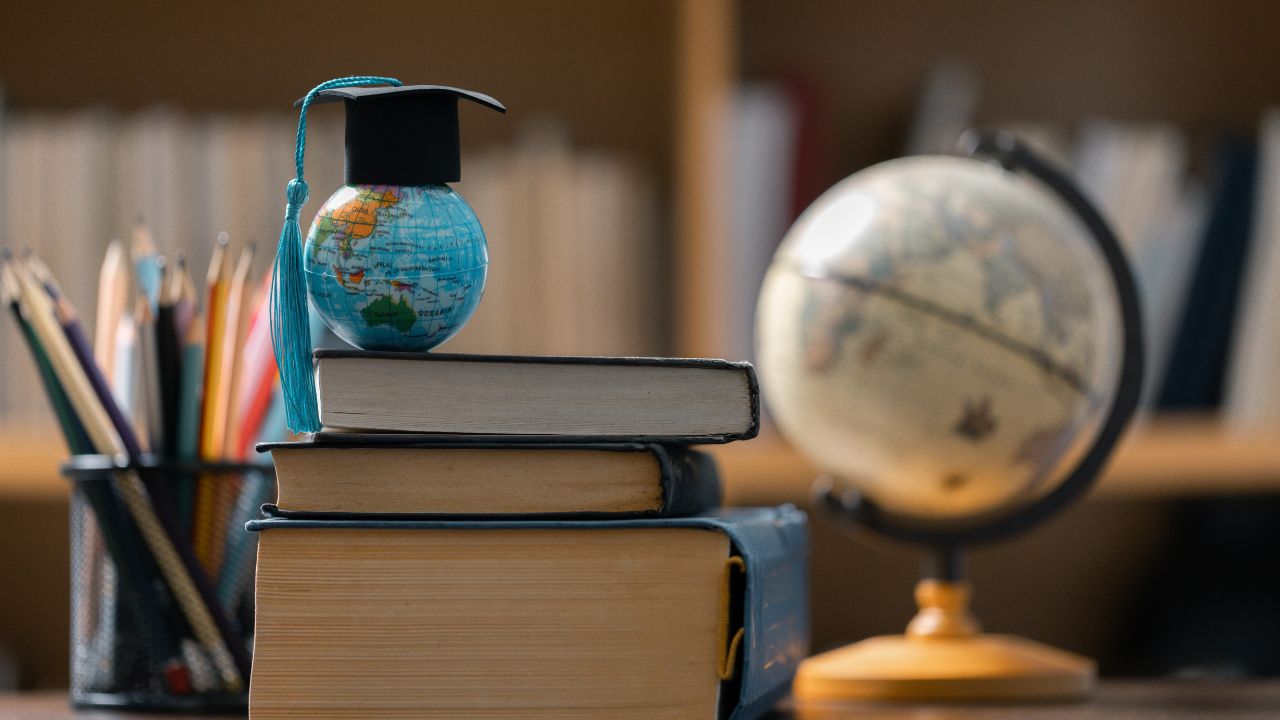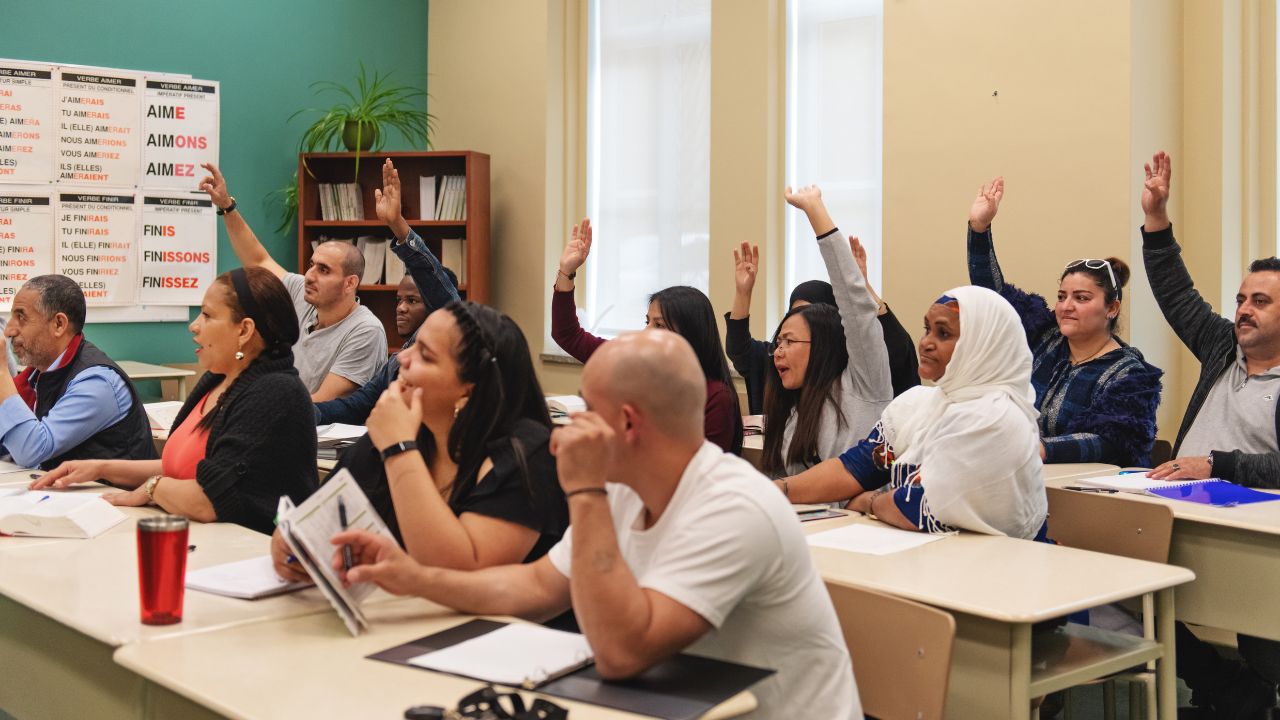
Post by : Zayd Kamal
In today's fast-paced, interconnected world, the way students learn and collaborate is rapidly evolving. Building Global Classrooms is becoming an essential trend in education, breaking down geographical barriers and creating learning environments that thrive on international collaboration. This shift is more than just an academic evolution—it’s a transformation that prepares students for a globalized future. The digital age, combined with an increased need for cultural understanding, is pushing schools, universities, and educators toward forming global partnerships, and this trend is reshaping how we approach education in the 21st century.
The concept of Building Global Classrooms is more than just an educational trend; it’s a strategic shift in how we view education in an increasingly interconnected world. As borders continue to blur with the rise of digital platforms, classrooms are no longer limited to a single geographic location. Today’s classrooms are global, offering students the opportunity to connect with peers, educators, and experts from across the world. This global reach helps broaden the learning experience, providing access to a wealth of knowledge and viewpoints that enrich students’ understanding of various subjects. By embracing these international collaborations, schools and universities are ensuring that students gain the diverse skills necessary to thrive in the global job market.
International collaboration brings several benefits to both students and educators alike. One of the key advantages is cultural awareness and sensitivity. As students collaborate with peers from different countries and backgrounds, they are exposed to a variety of perspectives, languages, and traditions. This fosters empathy, understanding, and appreciation for diversity, which are crucial skills in today’s interconnected world. Students who engage in global collaboration learn to navigate cultural differences, helping them develop into open-minded and adaptable individuals ready to work in a multicultural environment.
Additionally, international collaboration provides students with access to a broader array of learning materials and resources. Schools and universities around the world have access to different research, educational technologies, and teaching methods. Through collaboration, students can tap into these resources, enriching their academic experience. Whether it’s a shared research project or access to online learning platforms, these global partnerships ensure that students have access to cutting-edge knowledge and tools that they may not have had otherwise.
Moreover, students can improve their communication and collaboration skills through international partnerships. Working with people from different countries requires clear communication, adaptability, and teamwork. These are vital skills for the modern workforce, where collaboration with international colleagues is often a part of daily work life. By learning to communicate effectively with peers from different cultures and backgrounds, students gain valuable experience in managing cross-cultural projects and resolving misunderstandings that might arise.
At the heart of Building Global Classrooms is technology. Modern communication tools such as Zoom, Google Classroom, and Microsoft Teams have made it easier than ever for students and educators to connect across borders. These platforms enable real-time virtual learning, allowing students from different parts of the world to attend classes together, participate in discussions, and collaborate on projects. Technology has effectively transformed the classroom into a global space where learning knows no boundaries.
In addition to communication tools, online platforms offer vast resources for students to access courses, learning materials, and expert knowledge. Platforms like Coursera, edX, and other Massive Open Online Courses (MOOCs) give students the ability to learn from prestigious universities and institutions, making high-quality education accessible to anyone with an internet connection. The availability of these resources has made it easier for students to explore global perspectives, enriching their understanding of various subjects and topics.
Social media also plays an increasingly important role in Building Global Classrooms. Platforms like Twitter, LinkedIn, and Facebook allow students and educators to connect with each other, share ideas, and engage in global conversations. These platforms help build networks and communities of learners that extend beyond the classroom and foster collaboration on a global scale.
Around the world, educational institutions are increasingly adopting the model of Building Global Classrooms. Many universities and schools have established exchange programs, where students can spend time studying abroad or participate in joint degree programs with international institutions. These exchange programs offer invaluable experiences, exposing students to different teaching methods and educational cultures. They also provide students with the opportunity to immerse themselves in a foreign culture, enhancing their personal development and cross-cultural skills.
Another notable example of global classroom initiatives is the rise of Collaborative Online International Learning (COIL). COIL allows students from different countries to work together on academic projects without ever leaving their home institutions. This type of collaboration not only expands students’ academic horizons but also exposes them to the global challenges and solutions explored by their peers. COIL programs are becoming increasingly popular, as they allow students to collaborate on real-world issues with international peers, while gaining the skills needed to work effectively in diverse teams.
Additionally, many global classroom platforms, such as the United Nations’ Global Classrooms program, give students the chance to simulate international diplomatic processes, engage in debates, and develop leadership skills in a global context. These programs prepare students for careers in international relations, global business, and other fields that require the ability to collaborate across borders.
While the benefits of Building Global Classrooms are clear, there are also several challenges that come with international collaboration. One of the most significant challenges is the digital divide. Not all students have access to the same level of technology or internet connectivity, which can create disparities in the ability to engage in global collaboration. Ensuring that students in underserved areas have the same opportunities to participate in international learning initiatives is crucial for making global classrooms accessible to everyone.
Another challenge is overcoming language barriers. While English is often the common language used in global education, students from different linguistic backgrounds may still face difficulties in communication. Schools and universities must be proactive in providing language support and fostering an environment where all students feel comfortable contributing to discussions.
Time zone differences can also be an issue when scheduling global classroom activities. Coordinating live sessions or collaborative projects across multiple time zones can be logistically challenging. However, many institutions have addressed this by incorporating asynchronous learning tools, where students can contribute to discussions and complete tasks on their own time.
Building Global Classrooms is a new trend in education where students and teachers from different countries work together to learn and share knowledge. The idea of Building Global Classrooms is to connect students around the world, so they can learn from each other. It helps students understand different cultures, learn new things, and become better at working with people from other countries. Building Global Classrooms helps students gain skills like teamwork, communication, and respect for different cultures. This trend is made possible because of technology, which allows students to learn from anywhere, anytime. Teachers and students use tools like Zoom, Google Classroom, and online courses to connect with each other. In these global classrooms, students can join online projects, meet new friends, and learn how to work with people from all over the world.
This trend also helps students get ready for the future because the world is now more connected. Building Global Classrooms teaches students the importance of working together with people from different cultures. It helps them become better at problem-solving and prepares them for jobs that need people to work from different countries. Even though there are challenges like language barriers or time zones, Building Global Classrooms is helping create a better way for students to learn, share, and grow together.
Disclaimer: This article is brought to you by dxb news network.
Building Global Classrooms, International Collaboration, Global Classrooms, Global Education, Cultural Awareness, Digital Learning, Global Partnerships, Cross-cultural Communication, Collaborative Learning, Online Education, Global Connections, International Learning, Global Perspectives, Technology in Education, Global Skills, Education Trends, Cultural Exchange, Collaborative Online International Learning (COIL), Global Learning, Student Collaboration

Where Time Speaks: UAE’s Premier Museums & Archives to Visit
Explore UAE’s top national museums and archives — from Al Ain to Sharjah to Dubai — where history, c

From Pearling Paths to Diplomatic Bridges: UAE in Gulf History
Explore how the UAE shaped the Gulf through ancient trade, regional diplomacy, and commitment to Gul

How Sharjah Became the UAE’s Cultural Heart — A Story of Vision & Heritage
Explore how Sharjah earned its title as UAE’s heritage hub — from Qasimi patronage to UNESCO honours

Walking Through Time: How Souks & Old Towns Keep UAE Heritage Alive
Discover the UAE’s timeless charm — explore historic souks, restored old towns, heritage districts a

From Depths to Dhow: How Pearl Diving Forged Dubai’s Early Identity
Explore Dubai’s pre-oil era: how pearl diving, dhow trade, and coastal life shaped its culture, econ

From Ancient Forts to Heritage Villages: Unmissable Historic Sites Across the UAE
Explore UAE’s top historic landmarks — forts, mosques, archaeological parks, heritage villages & mor

The Black Golden Moment: How Oil Changed the Fate of the Emirates
From desert sheikhdoms to global powerhouse: discover how the UAE’s oil discovery reshaped its econo

Effective Ways to Reduce Joint Pain and Stiffness This Winter
Learn simple ways to reduce joint pain and stiffness this winter with warmth exercises diet tips and

Facial Sculpting and Non Invasive Techniques Safe Beauty Trends for the Future
Explore facial sculpting and non invasive techniques shaping beauty care Safe affordable and natural

Body Positivity Embracing Self Love Confidence & True Beauty
Celebrate body positivity embrace self love reject false beauty ideals and discover confidence at ev

Skin Microbiome Secrets to Healthy and Balanced Skin
Explore the skin microbiome its role in skin health and simple ways to keep your skin balanced healt

Sarcopenia How Aging Steals Muscle and Ways to Stay Strong
Discover sarcopenia the silent muscle loss with age its signs causes and simple ways to stay strong

Cultural Appropriation vs Appreciation Respecting Global Traditions
Learn the difference between cultural appropriation and appreciation to respect traditions and celeb

Uniform and Rebellion How Personal Identity Thrives Within Rules
Explore how uniforms shape identity and spark subtle rebellion blending conformity with personal exp

The Unseen Labor Behind Fashion Inside the Secret Stitch
Discover the hidden world of fashion labor and the secret stitch behind every garment Honor the hand